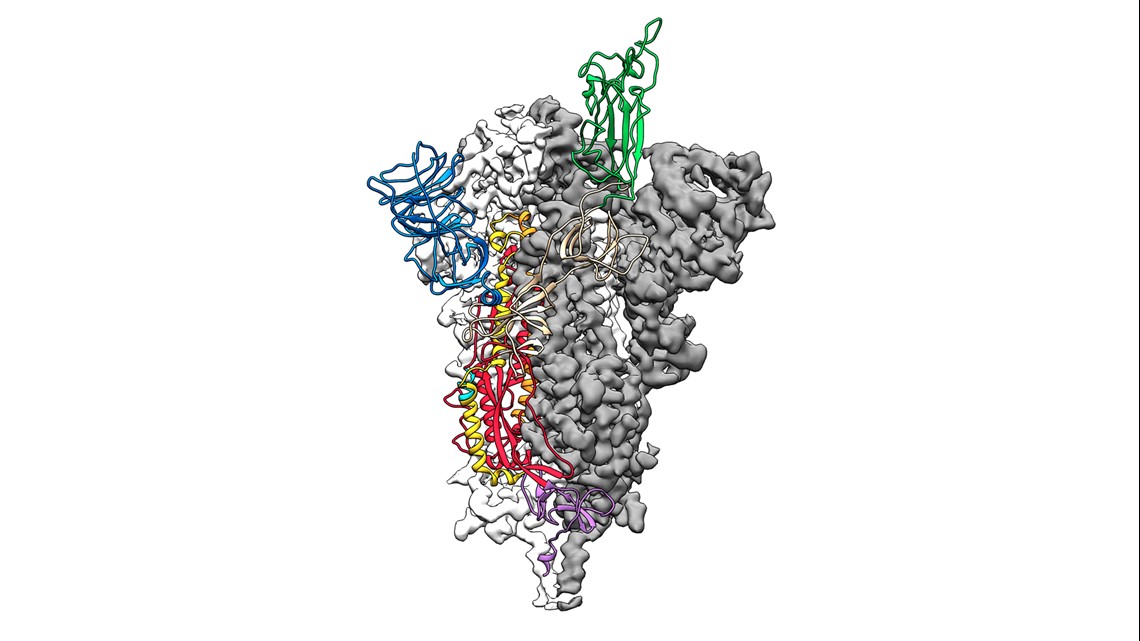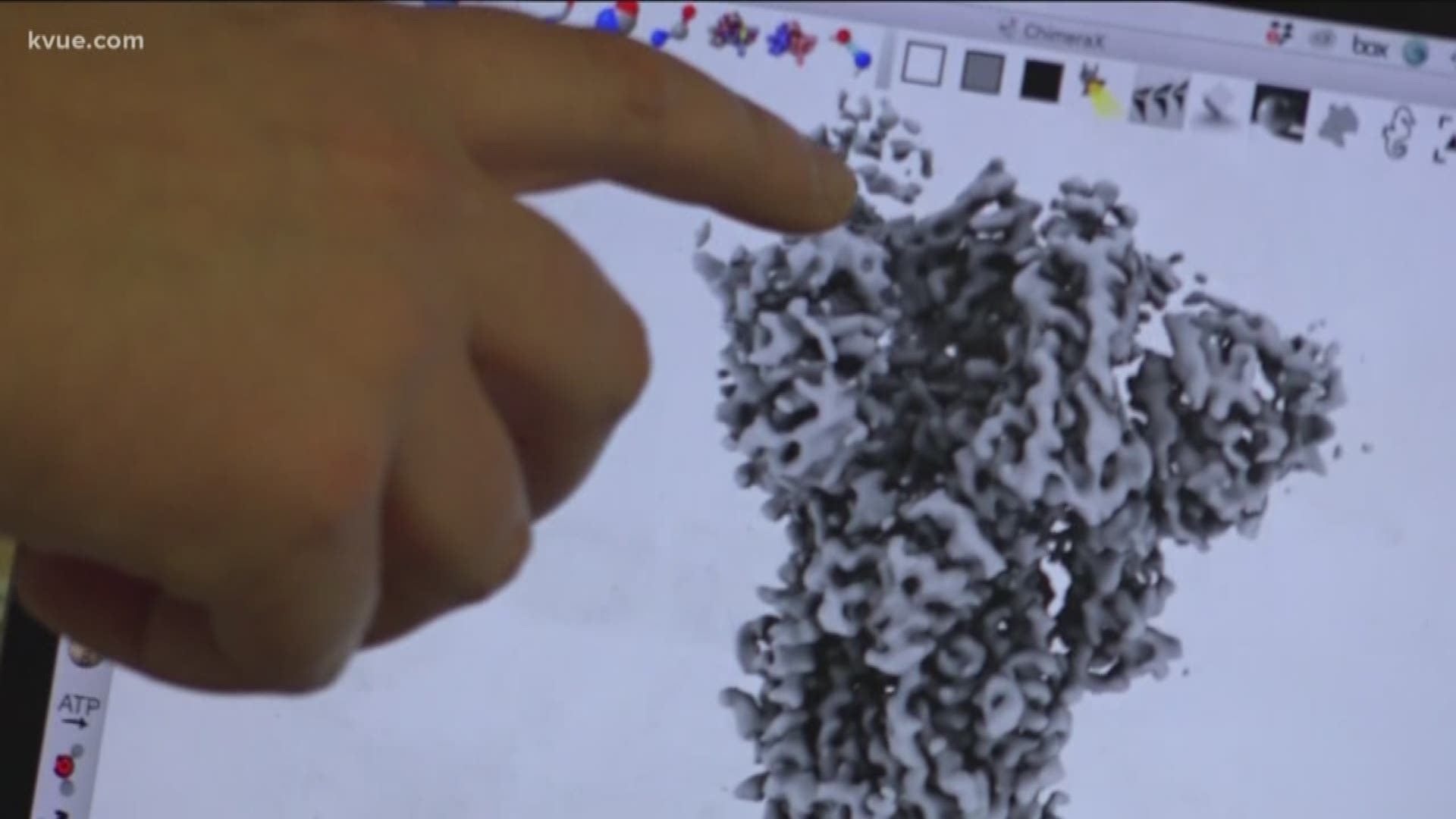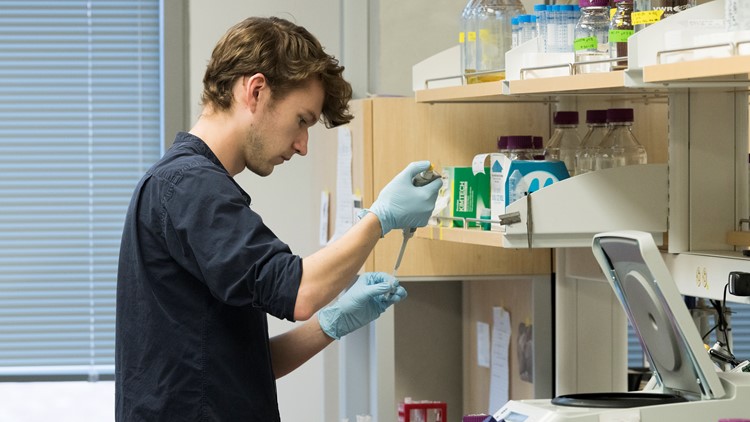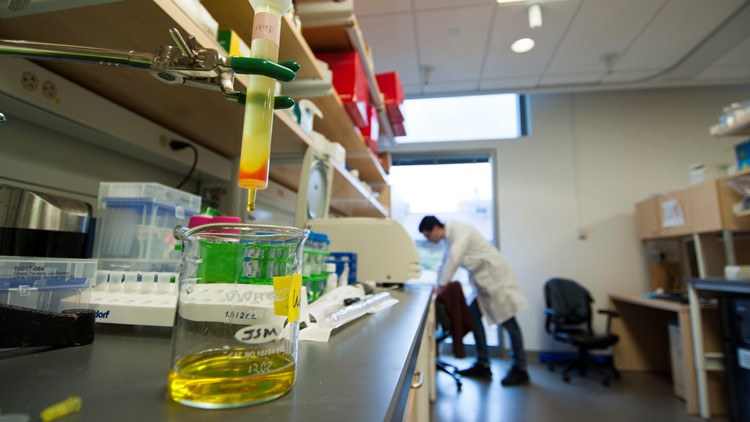AUSTIN, Texas — Researchers from University of Texas in Austin and the National Institutes of Health (NIH) have created the first 3D atomic-scale map of part of the coronavirus.
This map is a "critical breakthrough toward developing a vaccine for the 2019 novel coronavirus," the university said.
The map shows part of the virus called the "spike protein" that infects human cells.
"The protein takes on two different shapes conformations – one before it infects a host cell and another during infection," according to the university.
The map is "an essential step" that will help other researchers create vaccines that combat the virus, UT said.
The map of the spike protein is shown below:


UT Associate Professor Jason McLellan led the research. McLellan and his team have studied other coronaviruses for many years.
“As soon as we knew this was a coronavirus, we felt we had to jump at it because we could be one of the first ones to get this structure," McLellan explained. "We knew exactly what mutations to put into this because we’ve already shown these mutations work for a bunch of other coronaviruses."
RELATED:
UT researchers studying coronavirus
"Just two weeks after receiving the genome sequence of the virus from Chinese researchers, the team had designed and produced samples of their stabilized spike protein," UT Austin said. "It took about 12 more days to reconstruct the 3D atomic-scale map, called a molecular structure, of the spike protein and submit a manuscript to Science, which expedited its peer-review process."
The university added Ph.D. student Daniel Wrapp and research associate Nianshuang Wang assisted greatly in the research.
PEOPLE ARE ALSO READING:










